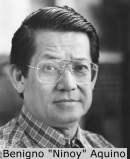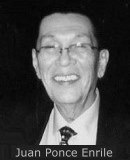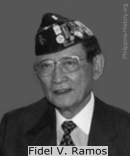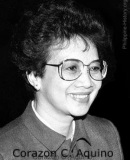La Liga Filipina
( The Philippine League) 1892
 La Liga Filipina (English: The Philippine League) was a progressive organization created by Dr.Jose Rizal in the Philippines in the house of Doroteo Ongjunco at Ilaya Street, Tondo, Manila in 1892.
La Liga Filipina (English: The Philippine League) was a progressive organization created by Dr.Jose Rizal in the Philippines in the house of Doroteo Ongjunco at Ilaya Street, Tondo, Manila in 1892.
The organization derived from La Solidaridad and thePropaganda Movement. The purpose of La Liga Filipina is to build a new group sought to involve the people directly in the reform movement.
The league was to be a sort of mutual aid and self-help society
dispensing scholarship funds and legal aid, loaning capital and setting
up cooperatives, the league became at threat to Spanish authorities that
they arrested Rizal on July 6, 1892 on Dapitan.
The
Regulations of La Liga Filipina by Rizal's hand
The night of his arrival in Manila, Rizal met over thirty distinguished
leaders, including Apolinario Mabini and Anderes Bonifacio, (05) and
outlined his plan for La Liga Filipina.
During the exile of Rizal, The organization became inactive, through
the efforts of Domingo Franco and Andres Bonifacio, it was reorganized.
The organization decided to declare its support for La Solidaridad and
the reforms it advocated, raise funds for the paper, and defray the
expenses of deputies advocating reforms for the country before the
Spanish Cortes. Eventually after some disarray in the leadership of the
group, the Supreme Council of the League dissolved the society.
The Liga membership split into two groups: the conservatives formed
the Cuerpo de Compromisarios which pledged to continue supporting the La Solidaridad while the radicals led by Bonifacio devoted themselves to a new and secret society, the Katipunan.
n
1892, Jose Rizal
(full name: Jose Protacio Mercado Rizal y Alonzo) returned to the Philippines and
proposed the establishment of a civic organization called “La Liga Filipina.”
On July 3, 1892, the following were elected as its officers: Ambrosio Salvador,
president: Agustin dela Rosa, fiscal; Bonifacio Arevalo, treasurer;
and Deodato Arellano, secretary. Rizal functioned as its adviser.
La Liga Filipina aimed to:
La Liga Filipina aimed to:
▪ Unite the whole country
▪ Protect and assist all members
▪ Fight violence and injustice
▪ Support education
▪ Study and implement reforms
La Liga Filipina had no intention of rising up in arms against the government; but
the Spanish Officialsstill
felt threatened. On July 6, 1892 only three days after La Liga Filipina’s establishment,
Jose Rizal was secretly arrested. The next day, Governor General Eulogio Despujol
ordered Rizal’s deportation to Dapitan, a small, secluded town in Zamboanga.
La Liga Filipina's membership was active in the beginning; but later, they began to drift apart. The rich members wanted to continue supporting the Propaganda Movement; but the others seemed to have lost all hope that reforms could still be granted.Andres Bonifacio was one of those who believed that the only way to achieve meaningful change was through a bloody revolution.
Sources:
http://en.wikipedia.org/wiki/La_Liga_Filipina
http://joserizal.info/Biography/man_and_martyr/chapter13.htm
http://www.philippine-history.org/la-solidaridad.htm




 In
the years that followed Martial Law started the suppressive and abusive
years–incidents of assassination were rampant, particularly those who opposed
the government, individuals and companies alike were subdued. The Filipinos
reached the height of their patience when former Senator Benigno "Ninoy"Aquino,Sr.
In
the years that followed Martial Law started the suppressive and abusive
years–incidents of assassination were rampant, particularly those who opposed
the government, individuals and companies alike were subdued. The Filipinos
reached the height of their patience when former Senator Benigno "Ninoy"Aquino,Sr.
 The
The
 demonstration
started to break in the cry for democracy and the demand to oust Marcos from his seat
at Malacañang Palace.
The revolt commenced when Marcos' Defense Minister Juan Ponce Enrile
and the Armed Forces Vice-Chief of Staff command of Fidel V. Ramos,
both withdrew their support from the government and called upon the resignation of then President Marcos.
They responsibly barricaded Camp Crame and Camp Aguinaldo and had their troops
ready to combat against possible armed attack organized by Marcos and his
troops. The Catholic Church represented by Archbishop Jaime Cardinal Vidal along
with the priests and nuns called for the support of all Filipinos who believed in democracy.
Radyo Varetas aired the message of Cardinal Sin
that summoned thousands of Filipinos to march the street of EDSA. It was an empowering
demonstration that aimed to succeed peacefully with the intervention of faith.
Nuns kneeled in front of tanks with rosaries in their hands and uttering their
prayers.
demonstration
started to break in the cry for democracy and the demand to oust Marcos from his seat
at Malacañang Palace.
The revolt commenced when Marcos' Defense Minister Juan Ponce Enrile
and the Armed Forces Vice-Chief of Staff command of Fidel V. Ramos,
both withdrew their support from the government and called upon the resignation of then President Marcos.
They responsibly barricaded Camp Crame and Camp Aguinaldo and had their troops
ready to combat against possible armed attack organized by Marcos and his
troops. The Catholic Church represented by Archbishop Jaime Cardinal Vidal along
with the priests and nuns called for the support of all Filipinos who believed in democracy.
Radyo Varetas aired the message of Cardinal Sin
that summoned thousands of Filipinos to march the street of EDSA. It was an empowering
demonstration that aimed to succeed peacefully with the intervention of faith.
Nuns kneeled in front of tanks with rosaries in their hands and uttering their
prayers. With
the power of prayers, the armed marine troops under the command of Marcos
withdrew from the site. Celebrities expressed their support putting up a
presentation to showcase the injustices and the anomalies carried out by the
Marcos administration. Finally, in the morning of February 25, 1986, Corazon
Aquino took the presidential oath of office, administered by the Supreme Court
Associate Justice Claudio Teehankee at Club Filipino located in San Juan. Aquino
was proclaimed as the 11th President of the Republic of the Philippines.
She was the first lady president of the country. People rejoiced over their
victory proving the success of the EDSA People’s Power Revolution,
the historic peaceful demonstration. Although in 2001, there was an attempt to
revive People Power in the efforts to oust then President Joseph Estrada, it
was not as strong as the glorifying demonstration in 1986. The bloodless, People Power
Revolution in EDSA renewed the power of the people, strengthened the meaning of
democracy and restored the democratic institutions of government.
Continue to the 5th Republic (1986) up to the Present Time.
With
the power of prayers, the armed marine troops under the command of Marcos
withdrew from the site. Celebrities expressed their support putting up a
presentation to showcase the injustices and the anomalies carried out by the
Marcos administration. Finally, in the morning of February 25, 1986, Corazon
Aquino took the presidential oath of office, administered by the Supreme Court
Associate Justice Claudio Teehankee at Club Filipino located in San Juan. Aquino
was proclaimed as the 11th President of the Republic of the Philippines.
She was the first lady president of the country. People rejoiced over their
victory proving the success of the EDSA People’s Power Revolution,
the historic peaceful demonstration. Although in 2001, there was an attempt to
revive People Power in the efforts to oust then President Joseph Estrada, it
was not as strong as the glorifying demonstration in 1986. The bloodless, People Power
Revolution in EDSA renewed the power of the people, strengthened the meaning of
democracy and restored the democratic institutions of government.
Continue to the 5th Republic (1986) up to the Present Time.













